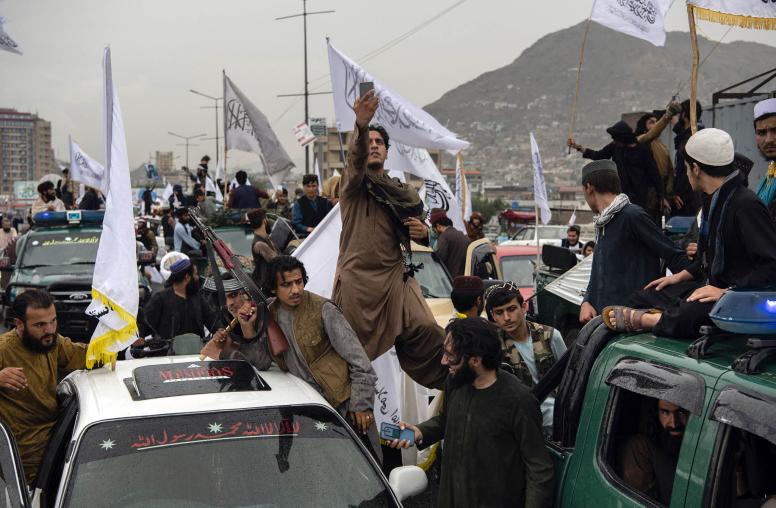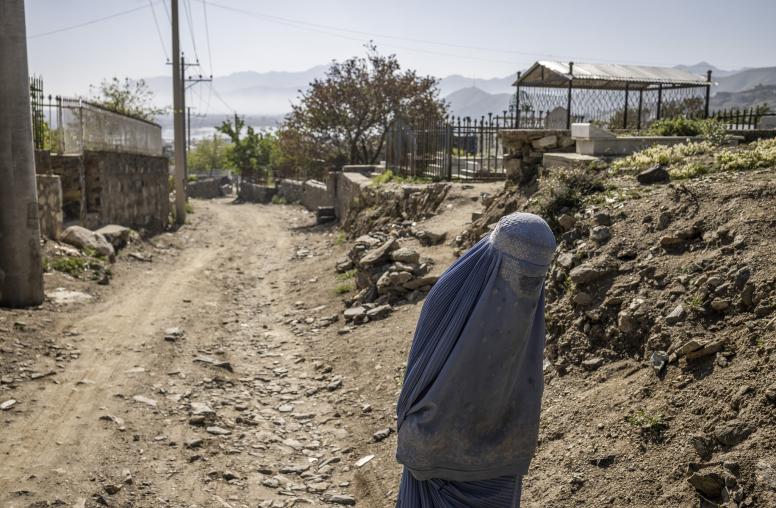As Afghanistan attempts to develop its economy by attracting investment to its mining sector, the already daunting conditions for women in rural areas could worsen without specific steps to address their needs. That’s the conclusion of a study funded by USIP that examined the potential ramifications for women in three mining communities in Afghanistan.

The Afghan government has long been dependent on foreign aid, failing to amass enough domestic revenue because of low tax collections in an economy weakened anyway by decades of conflict. The gap is set to widen as most foreign troops withdraw by the end of this year and international donors pull back in tandem. Development economist William Byrd, a USIP senior expert, said in a recent report that Afghanistan’s domestic revenue shortfalls might reach $1 billion this year, he said.
“Urgent measures are needed to turn around poor revenue performance, including strong signals from the top, possible exploitation of limited new revenue sources and cooperation among different agencies,” Byrd wrote in the USIP report.
Afghanistan has a wealth of natural resources -- copper, iron ore, lithium and gold, to name just a few. The potential is huge for attracting international investment to exploit these resources. The Afghan Geological Survey, with help from a Pentagon task force, estimated in 2011 that Afghanistan holds as much as $3 trillion of untapped natural resources, according to Bloomberg News.
Many of the mineral deposits in Afghanistan are crucial to the development of key technologies, such as lithium for the booming cell phone business, for example.
But drawing on the full range of mineral resources in Afghanistan can generate a host of problems, including exacerbating corruption and fueling insurgencies and other local disputes, Byrd noted in a 2012 report.
In a study commissioned by USIP, Integrity Watch Afghanistan surveyed five communities near mining sites to gauge the impact on women. The report, written by USIP Senior Consultant Sadaf Lakhani with Marine Durand and Javed Noorani of Integrity Watch, is part of a broader joint project of the two organizations to examine potential drivers of conflict related to extractive industries and ways to prevent disputes and discontent from spiraling into violence.
The study found that women are affected differently, and often more negatively, than men by extractive industries operating in or close to their communities. The Afghan government risks adding to the scope of development challenges it already faces if it doesn’t account for the living and working conditions of women in mining-affected areas. Particular challenges include the threats of displacement, insecurity and insufficient access to health care.
Communities often have to be moved in order for companies to construct new mines and build the transportation corridors to get the minerals to market. Even when communities remain intact, the men might have to seek work elsewhere because many are farmers and mines often replace agricultural land. Either kind of displacement is particularly difficult for women, according to the report. Conversely, migration of international workers into mining regions may decrease security for women.
'Vulnerable to shocks'
In Afghanistan, women often are not allowed to travel without a male member of the family, so being left without males in the household can limit their access to food, health care, education and jobs, exacerbating development problems. When women stay behind on their own, they may be “vulnerable to shocks, with fewer opportunities to change their environment and fewer coping strategies,” the study found. They also often feel less connected to their communities.
In a community near the Ajigak (or Hajigak) iron ore mine about 60 miles west of Kabul, for example, Integrity Watch found that more than half of households reported males leaving the community in search of work. The location is considered Afghanistan’s biggest iron ore deposit.
Researchers also found that 52 percent of females they interviewed there reported that security had deteriorated for women within the last two years. In the Qara Zaghan gold mine area in the northern province of Baghlan, 61 percent of women reported that they had not left their homes in the previous 12 months.
Women also are at risk from the health-related effects of mining. Intensive drilling, for example, may require large amounts of water, reducing an area’s available supply, and pollutants from the mines can reduce water quality. So women, who typically serve as the water collectors of the family, now must travel farther to access clean water, placing additional burdens on their time and security.
Availability of food also might diminish if families are displaced from mining areas to locations where the soil is inferior for growing crops or tending livestock, a phenomenon that also tends to affect women more than men because of the way household resources, including food, are allocated.
The report makes several recommendations to ensure that the development of mines translates into economic and social empowerment for women:
- Undertake a needs assessment to identify women’s specific needs by consulting women directly.
- Increase security, especially making provisions such as female-only walking routes or additional transportation.
- Identify potential jobs for women at mining sites or related to mining activities, and consider a quota to force mining companies to employ women.
- Offer skills training for women to allow them to work in newly available jobs in mining communities.
In some cases, mining company agreements with the Afghan government require that they invest in new infrastructure such as roads and schools in the communities in which they work. The report found that some mining companies abide by the agreements, while other companies did nothing to support the local population. In the latter cases, the Afghan government was not enforcing the agreements. It is crucial that communities are aware of their entitlements under mining agreements, and also have mechanisms to report injustices, the researchers wrote.
In addition to challenges for women in mining-affected areas, the potential for increased corruption and violence, as well as major environmental problems surrounding mining enterprises should be considered as new mining sites are established, the authors said.
Emily Horin is a senior program assistant in USIP’s Center for South and Central Asia.



